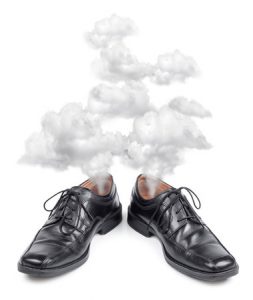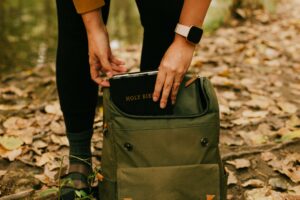
None of us wants to live life waiting for the next shoe to drop, but after witnessing the tragic fall-out from Hurricanes Helene and Milton, we don’t want to be unprepared for the unexpected.
To me, being prepared is a sign of intelligence – if you have the mental ability to prepare for all outcomes to any situation, you will be better prepared for unknown surprises. You can act quicker as you secure a better outcome if you are prepared for a disastrous event.
That said, keep your prepping simple. Let’s start with 10 of the most important items you should have in an emergency kit.
Emergency Kits
An Emergency Kit should contain:
- Water – as much as you can safely store;
- Non-perishable food – freeze dried foods are easy to store;
- Flashlights and extra batteries;
- First aid kit;
- Extra medications with a copy of prescriptions;
- Sanitation and hygiene supplies;
- Sleeping bags and warm blankets;
- Various communication devices with solar power rechargers, and an old-fashioned, basic battery charged AM radio;
- Change of clothes and shoes – old boots and rubber soled shoes;
- Extra eyeglasses and hearing aids.

Have a spare pair of shoes in your Emergency Kit.
Important Points
The details can make a big difference:
- Water – it takes one gallon per person per day to keep you safe for several days; water is needed for drinking and sanitation;
- Food – have enough stored for at least a 3-day supply of non-perishable food per individual and for your pets, too;
- Battery-powered or hand crank radio and a NOAA Weather Radio that run on batteries;
- Flashlights – have several flashlights available and one per person is ideal;
- First aid kit – don’t skimp with first aid; have plenty of bandages, steri-strips, latex gloves; extra pain killers, Arnica Montana, topical antibiotics and hydrocortisone creams; detoxing agents like detox clays; a tourniquet; some crutches;
- A spare pair of rubber soled shoes.
Grab And Go
If you have to leave in a hurry, have a Go Bag (Bug Out Bag) containing the primary things you want to have with you. In the event of an emergency that requires you to evacuate, everyone in your household should have a Go Bag packed and ready to go. Your Go Bag should be a sturdy and easy to carry backpack or duffle bag.

A Go Bag includes:
- Bottled water;
- Powdered electrolyte packets;
- Nonperishable ready-to-eat food, such as granola bars or protein bars; ideally, pack a 3-day supply;
- Personal hygiene items (toothbrush, toothpaste, deodorant, wet wipes, etc);
- Battery charged or hand crank flashlight;
- Small hand-crank or battery-operated AM/FM radio;
- Emergency blanket, 12-hour body warmers, or a poncho;
- Phone charger – electrical or solar;
- Extra batteries;
- First aid kit with latex gloves;
- Personal medications and copies of your prescriptions;
- Pet leash;
- Extra pair of eye glasses or contacts;
- Extra pair of rubber soled shoes;
- Spare pair of jeans.
If the electricity goes out, a solar phone charger and radio charger will keep your communications working – as long as the sun is out, that is. Rubber soled shoes or boots are important in case live electrical wires are flopping around the ground, especially if you’re exposed to floods.
Needing extra food, water, and medications is a given, but remember that your written prescriptions are important, too. This way, you can fill your medicines anywhere and never risk running out.
Store the small packages of Hot Hands hand warmers in your Emergency Kit and Bug Out Bag, and these will keep your hands and feet warm if it gets cold at night. And, don’t forget about your pets, too. They’ll need a leash to keep them from running off, and provide extra food and water for them, too. Plus, they can keep you warm at night.
I could keep listing more tips, but these are the primary things that can protect you while you seek a safer place during an emergency. The most important thing to do is to do these things! No one wants to experience a hurricane, flood, tornado, earthquake, or invasion, but if you are prepared to high-tail it out of there safely – you’re on the right side of survival.
_______________
If you want to learn more about healthy living and disease prevention, contact me at janethull.com. Remember that you are never alone when you are looking for good health!
I look forward to supporting you on your journey to alternative health and wellness.
_____________
Disclaimer: This article is for informational purposes only, and is educational in nature. The FDA may not have evaluated some of the statements. This article is not intended to diagnose, treat, cure, or prevent any disease. Please discuss with your own, qualified health care provider before adding supplements or making any changes to your dietary program.
Before taking vitamins, consult your doctor; pre-existing medical conditions or medications you are taking can affect how your body responds to multivitamins.
You have our permission to reprint this article if you attribute us with a live back-link to this article and the youtube links. http://www.janethull.com/
_______________